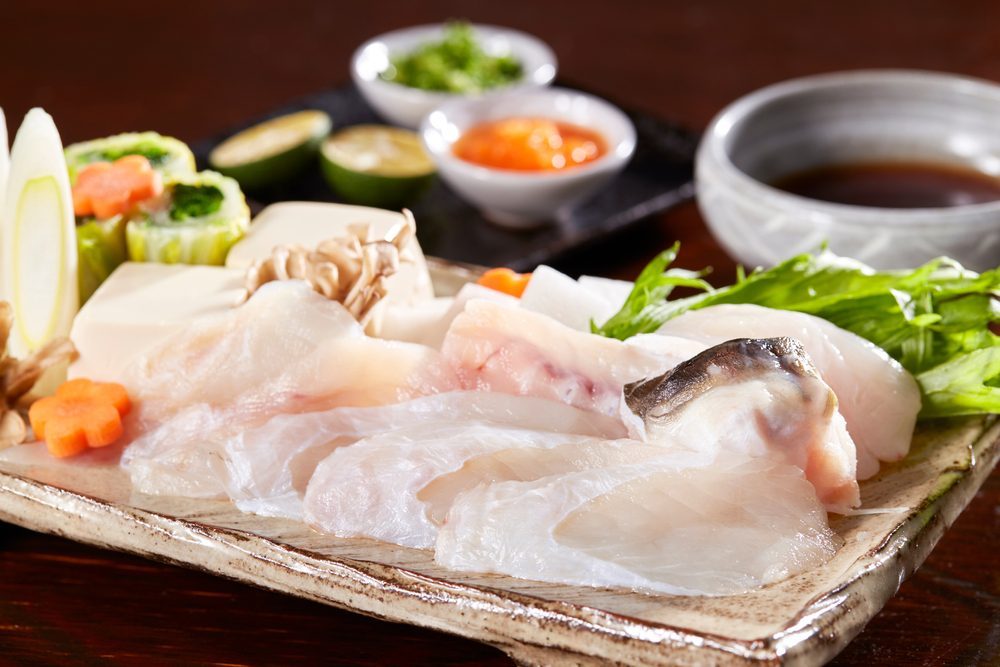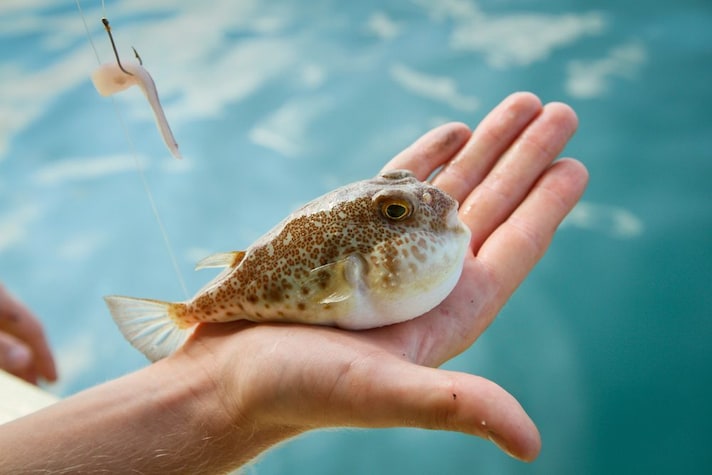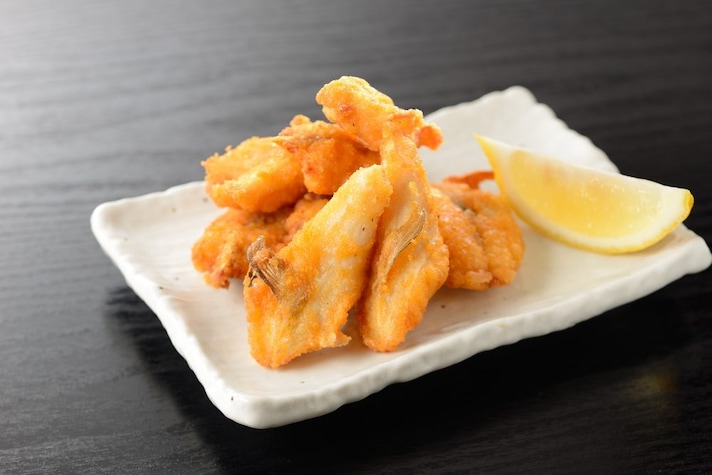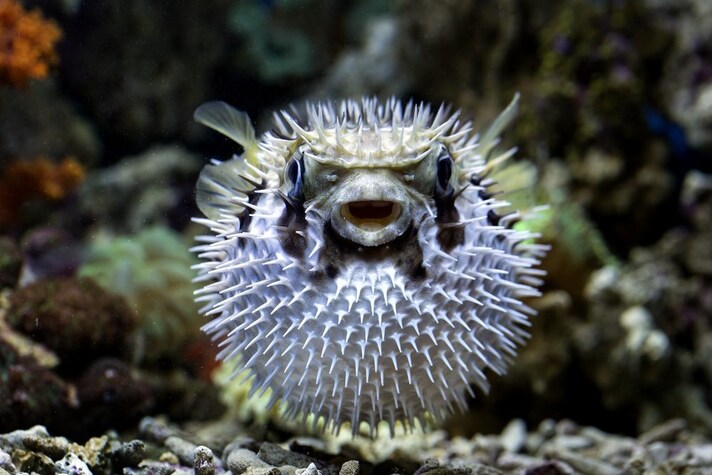What is Fugu, The Dangerous Puffer Fish, Potentially Deadly Japanese Gastronomic Delicacy
Strictly regulated in the U.S., banned throughout the European Union, very expensive, renowned and very dangerous: the puffer fish is a Japanese delicacy suitable only for the bravest.
;Resize,width=742;)
There are approximately 191 species of puffer fish in the world, but only one makes chefs and food enthusiasts around the world tremble: the fugu, which has become globally known as one of the most dangerous gastronomic luxuries around. This small and friendly fish that swells up and becomes all round, in fact, contains a toxin so powerful that it is capable of causing violent death in just a few minutes.
Yet, in Japan (and in a few other select places in the world), fugu is eaten. Because, it is edible, but only if processed and cooked scrupulously, following very precise rules. This is why eating fugu is a bit like a game of Russian food roulette, and why it is so rare to find: consider that between 1956 and 1958, 420 deaths occurred due to the consumption of puffer fish that was not prepared correctly.
Today things are different, the rules are more rigid, and in recent times the deaths from fugu consumption are about 3 per year. However, the thrill remains, and the puffer fish is confirmed as one of the most dangerous preparations in the world despite the extreme delicacy of its flavor and its white meat. And a law, still in force today, prohibits the Japanese emperor from eating fugu.
What is Fugu and Why is It so Dangerous?
The puffer fish would be a fish like many others, if it were not for one particular characteristic: it contains tetradoxin, a particular neurotoxin believed to be about 1,200 times stronger than cyanide. It is a very powerful poison, with a very rapid effect, which attacks the muscles but leaves the victim conscious, who faces a rapid but very painful death. And there are no antidotes or cures.
Not all puffer fish are full of tetradoxin: the substance is concentrated in the eyes, liver and ovaries, but even just one of these elements comes into contact with the rest of the meat for it to become equally lethal. This is why the number of chefs authorized to prepare this very risky dish is very limited, and strictly controlled by the government.

Yet, despite the obvious danger, fugu is a food that has a very ancient tradition in Japan, dating back to 10,000 BC, in the Jomon period. Although over the centuries, at alternating periods, its consumption was suspended, the ban on the free consumption of fugu is due to the American general MacArthur, after Japan was defeated in the Second World War. It was he who introduced the requirement for a specific license for restaurants that wanted to serve puffer fish, following the death of a number of American soldiers stationed in the country.
To this day, this law has remained and has even been tightened. To avoid the risk, which seems to have increased further due to the warming of the waters: climate change causes the increase of hybrid puffer fish, difficult to distinguish from true fugu and therefore capable of having the poison also in other unidentified parts of the body.
How to Eat Fugu Without Risk? Puffer Fish Preparations
The few chefs authorized to cook fugu usually prepare it in three different ways. The most popular is fugu sashimi, also known as fugusashi: the fish is cut into very thin, almost transparent slices, served on a plate with green onion and ponzu sauce, and presented in the shape of a chrysanthemum.
Another popular way to cook fried fugu: in this case the fish is lightly marinated and then fried, so that it remains soft in the center but crispy on the outside. It is usually served with salt and lime juice. The third preparation is stewed: the fugu is boiled in dashi broth together with vegetables, tofu and mushrooms. Often the skin of the puffer fish is also used, appreciated for its high collagen content and served cut into strips raw, fried, boiled or grilled.

The most daring, then, try their hand at an extremely risky preparation, a real challenge to death: the processing of the ovaries, one of the most poisonous parts of the fish. They are salted and put in brine for three years, the time needed for the toxicity to be reduced to zero, and then mixed with rice paste to obtain a soft dough. A technique so dangerous, that only 4 cities in all of Japan are authorized to prepare this particular dish.
How Much Does Fugu Cost and Where Can It Be Eaten?
Because of its rarity, its dangerousness and the extreme difficulty in processing it, fugu is a luxury culinary specialty, which reaches exorbitant prices. Also because there are very few places in the world where it is possible to consume fugu. One of these is Japan, where it is obviously more widespread, although to be able to serve the puffer fish the chef must have a special license from the Ministry of Health, Labor and Welfare, have completed a two-year apprenticeship and have passed two exams, one for identifying the fish and one for preparing the dish. It is not surprising that only 35% of those who apply manage to obtain the license.

Among the most famous restaurants that serve puffer fish are the 2 Michelin starred Usuki Fugu Yamadaya in Tokyo, and the Zuboraya chain in Osaka. In the rest of the world, it is much more difficult to taste fugu. In the US, fewer than 20 restaurants have government permission to serve fugu, and in all cases the fish must be imported pre-sliced and frozen directly from Japan. In Europe, however, the sale and consumption of the potentially lethal puffer fish is absolutely prohibited.
;Resize,width=767;)
;Resize,width=712;)


